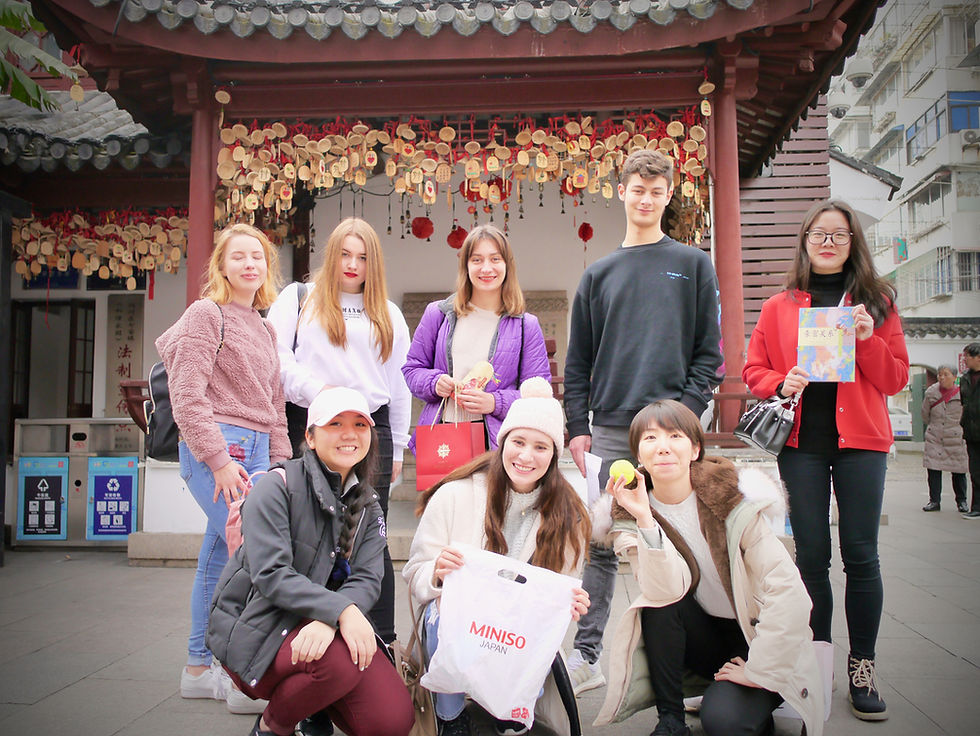Exploring Vibrant Cultures: the Beauty of Chinese Painting
- Wanderlust Exchange

- Apr 1, 2024
- 2 min read
In our Au Pair in China program, cultural activities serve as the heart of our exchange and learning experience. These activities not only enrich our lives but also foster cross-cultural exchange and understanding.
Recently, our au pairs attended a traditional painting class in a Chinese painting studio located in the suburban of Ningbo city, Zhejiang. Amid laughter and concentration, they grasp the brushes, painting intricate scenes of flowers and birds with their own hands.

Chinese painting, a traditional form of art in China, with its rich cultural connotations, uses simple tools to convey profound philosophical ideas, making it a unique and deeply meaningful form of artistic expression. It usually involves using a brush dipped in water, ink, or color to paint on silk or paper.

Chinese painting is mainly categorized into figures, flowers and birds, and landscapes. These categories actually represent broader concepts and ideas through artistic expression. Figure painting depicts human society and relationships; landscape painting portrays the relationship between humans and nature, merging humans and nature into one; while flower and bird painting showcases various forms of life in nature, emphasizing harmony between humans and nature. The combination of these categories represents the entirety of the universe, complementing each other and embodying the essence of art.

In a world often divided by differences, the experience served as a reminder of the beauty that emerges when we come together, when we share, and when we create. And in that shared space of the Chinese painting studio, they found a glimpse of a brighter, more harmonious world.
If you're interested in learning more about Chinese culture and experiencing it firsthand by coming to China, please don't hesitate to reach out to Wanderlust. We're here to help you embark on your own incredible journey of cultural exchange and discovery.

Wanderlust Exchange encourages the exploration of self-awareness and personal development , and fostering of global understanding. We desire to bridge cultural divide and contribute to build the world with more trust, understanding and diversity among all.






When it comes to storage solutions, MasterStorage365 delivers everything you could want. From climate-controlled options that protect delicate items, to drive-up units for fast loading and unloading, they cover every need. I love that https://www.masterstorage365.com/ even provide mailbox rentals and a professional conference facility. The extra-large flex units are a lifesaver for bigger projects or businesses.